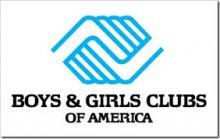
The Boys & Girls Clubs of America provide a safe and affordable place for young people to gather during non-school hours and during summer vacation months. They seek to assist all young people “to reach their full potential as productive, caring, responsible citizens.”1 Their core beliefs include providing hope, opportunity, character development, stable relationships with adult professionals, and a safe place to learn and grow.2
Mary Goodwin, Alice Goodwin, and Elizabeth Hammersley of Hartford, Connecticut organized a boys club in 1860 to give the boys roaming the streets a positive alternative. Nearly a half century later, in 1906, 53 boys clubs formed the Federated Boys Clubs in Boston, Massachusetts.3 Their purpose in forming a national organization was to gather support through a unified leadership.
Twenty five years later, in 1931, the Federation became the Boys Clubs of America and twenty five years after that, in 1956, they received a United States Congressional Charter. To more accurately reflect their work among all youth, they changed their name to be the Boys & Girls Clubs of America (BGCA) in 1990. At that time, their Congressional Charter was amended and renewed.4
The Boys & Girls Clubs of America is a coalition of over 1100 independent clubs in America and on U.S. military bases. Led by paid youth development professionals, these community based clubs support academic success, healthy lifestyles, and the development of good character and citizenship in all school aged youth.5
Because in the U.S. 30% of public high school students are not graduating on time, the Boys & Girls Clubs of America has a goal of seeing that every club member graduates from high school. Some of the education and career programs they have for their members' academic success include the Power Hour, a homework help and tutoring program; Club Tech, a help program on using technology; Money Matters: Make it Count, a financial literacy program; and Goals for Graduation, an academic goal setting program.6
The Boys & Girls Clubs of America is concerned with the childhood obesity trend and youth engaging in risky behaviors, such as drug use and premature sexual activity. Their Health & Life Skills Initiatives and their Sports, Fitness and Recreation Programs address these concerns.7 SMART Moves (Skills Mastery and Resistance Training) is a program focusing on helping youth resist risky life choices through enhancing their life skills, strengthening their leadership abilities, and helping them to build resiliency to such influences.8
Within the Sports, Fitness, and Recreation Program and in association with the Major League Baseball (MLB) Community is the Wanna Play? program for ages 6-12, the Jr. RBI program for ages 5-12, and the RBI: Reviving Baseball in Inner Cities program for ages 13-18.9
The Boys & Girls Clubs of America's Triple Play program that was launched in 2005 is a “game plan for the mind, body and soul.”10 Sponsored by Coca-Cola and the WellPoint Foundation, Triple Play educates youth concerning nutrition choices and regular health care, provides sports and fitness activities, and assists youth in developing healthy relationships and a positive self-concept.
The leadership building groups, Torch Clubs (ages 11-13) and Keystone Clubs (ages 14-18), encourage service to their community as well as their club. BGCA's Youth of the Year program honors young people who have overcome obstacles and excelled academically and in service to their community.11
Through all these programs, the Boys & Girls Clubs of America assist the youth to reach their potential and form positive connections with friends and adults. In providing a safe place they also provide youth “a chance to play, have fun, laugh and learn.”12
- 1. “Who We Are.” Boys & Girls Clubs of America. < http://www.bgca.org/newsevents/Pages/Media_Kit.aspx > 10 Oct. 2011.
- 2. “Our Mission.” Boys & Girls Clubs of America. < http://www.bgca.org/whoweare/Pages/Mission.aspx > 10 Oct. 2011.
- 3. “Our History.” Boys & Girls Clubs of America. < http://www.bgca.org/whoweare/Pages/History.aspx > 10 Oct. 2011.
- 4. Ibid.
- 5. Op.cit., “Who We Are.”
- 6. Op.cit., “Who We Are.”
- 7. “What We Do.” Boys & Girls Clubs of America. < http://bgca.org/whatwedo/Pages/WhatWeDo.aspx > 10 Oct. 2011.
- 8. Op.cit., “Who We Are.”
- 9. “Sports, Fitness & Recreation.” Boys & Girls Clubs of America. < http://bgca.org/whatwedo/SportsFitnessRecreation/Pages/SportsFitnessRecreation.aspx > 10 Oct. 2011.
- 10. “Triple Play.” Boys & Girls Clubs of America. < http://bgca.org/whatwedo/SportsFitnessRecreation/Pages/TriplePlayDetail.aspx > 10 Oct. 2011.
- 11. Op.cit., “Who We Are.”
- 12. “Facts and Figures.” Boys & Girls Clubs of America. < http://bgca.org/whoweare/Pages/FactsFigures.aspx > 10 Oct. 2011.

